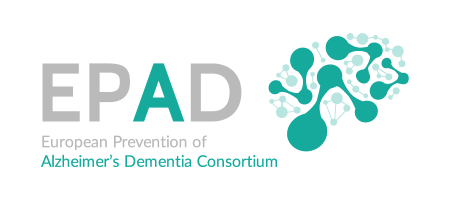“Grey-Matter Structure Markers of Alzheimer’s Disease, Alzheimer’s Conversion, Functioning and Cognition: A Meta-Analysis Across 11 Cohorts”

Authors: Baptiste Couvy-Duchesne, Vincent Frouin, Vincent Bouteloup, Nikitas Koussis, Julia Sidorenko, Jiyang Jiang, Alle Meije Wink, Luigi Lorenzini, Frederik Barkhof, Julian N. Trollor, Jean-François Mangin, Perminder S. Sachdev, Henry Brodaty, Michelle K. Lupton, Michael Breakspear, Olivier Colliot, Peter M. Visscher, Naomi R. Wray, for the Alzheimer’s Disease Neuroimaging Initiative, the Australian Imaging Biomarkers and Lifestyle flagship study of ageing, the Alzheimer’s Disease Repository Without Borders Investigators, the MEMENTO cohort Study Group
Abstract:
Alzheimer’s disease (AD) brain markers are needed to select people with early-stage AD for clinical trials and as quantitative endpoint measures in trials. Using 10 clinical cohorts (N = 9140) and the community volunteer UK Biobank (N = 37,664) we performed region of interest (ROI) and vertex-wise analyses of grey-matter structure (thickness, surface area and volume). We identified 94 trait-ROI significant associations, and 307 distinct cluster of vertex-associations, which partly overlap the ROI associations. For AD versus controls, smaller hippocampus, amygdala and of the medial temporal lobe (fusiform and parahippocampal gyri) was confirmed and the vertex-wise results provided unprecedented localisation of some of the associated region. We replicated AD associated differences in several subcortical (putamen, accumbens) and cortical regions (inferior parietal, postcentral, middle temporal, transverse temporal, inferior temporal, paracentral, superior frontal). These grey-matter regions and their relative effect sizes can help refine our understanding of the brain regions that may drive or precede the widespread brain atrophy observed in AD. An AD grey-matter score evaluated in independent cohorts was significantly associated with cognition, MCI status, AD conversion (progression from cognitively normal or MCI to AD), genetic risk, and tau concentration in individuals with none or mild cognitive impairments (AUC in 0.54–0.70, p-value < 5e-4). In addition, some of the grey-matter regions associated with cognitive impairment, progression to AD (‘conversion’), and cognition/functional scores were also associated with AD, which sheds light on the grey-matter markers of disease stages, and their relationship with cognitive or functional impairment. Our multi-cohort approach provides robust and fine-grained maps the grey-matter structures associated with AD, symptoms, and progression, and calls for even larger initiatives to unveil the full complexity of grey-matter structure in AD.
DOI: doi.org/10.1002/hbm.70089
Published online: 3 February 2025 in the journal Human Brain Mapping
